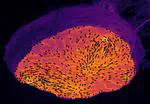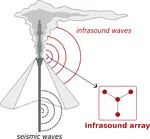Sébastien Valade
Professor - Volcanology/Geophysics
Department of Volcanology (Institute of Geophysics, UNAM)
Sébastien Valade is Professor (Investigador Titular A) in the Department of Volcanology in the Institute of Geophysics at UNAM (Universidad Nacional Autónoma de México, Mexico City). He is the founder and developer of the volcano monitoring system MOUNTS (Monitoring Unrest from Space, www.mounts-project.com).
He is a member of the Editorial Board in the journal Communications Earth & Environment (Nature Portfolio).
- volcanic eruption dynamics
- ground- & satellite-based observation of volcanic activity
- computer vision
- machine- & deep-learning applied to volcanology
-
since 2023 Professor (Investigador Titular A)
UNAM (Mexico), Dept. of Volcanology
-
2020-2023 Associate Professor (Investigador Asociado C)
UNAM (Mexico), Dept. of Volcanology
-
2017-2019 PostDoc fellowship
TUB (Germany), Dept. of Computer Vision & Remote Sensing
GFZ (Germany), Volcanic Hazards Team
-
2013-2017 PostDoc fellowship
UNIFI (Italy), Laboratorio di Geofisica Sperimentale LGS
-
2012-2013 PostDoc fellowship
UCA (France), Laboratoire Magmas et Volcans LMV
-
2008-2011 PhD candidate
UCA (France), Laboratoire Magmas et Volcans LMV
Publications
All Publications:
View / filter all 36 academic publications
Featured Publications (top 5):
Latest Publications (last 5):
* articles written by students under the supervision of Sébastien ValadeTalks
All Talks:
View all talks/posters
Latest Talks:
Funded projects
Contact
- valade@igeofisica.unam.mx
- UNAM - Instituto de Geofísica - Ciudad Universitaria, Circuito de la Investigación Científica s/n, Mexico City, 04510
- Mounts System



